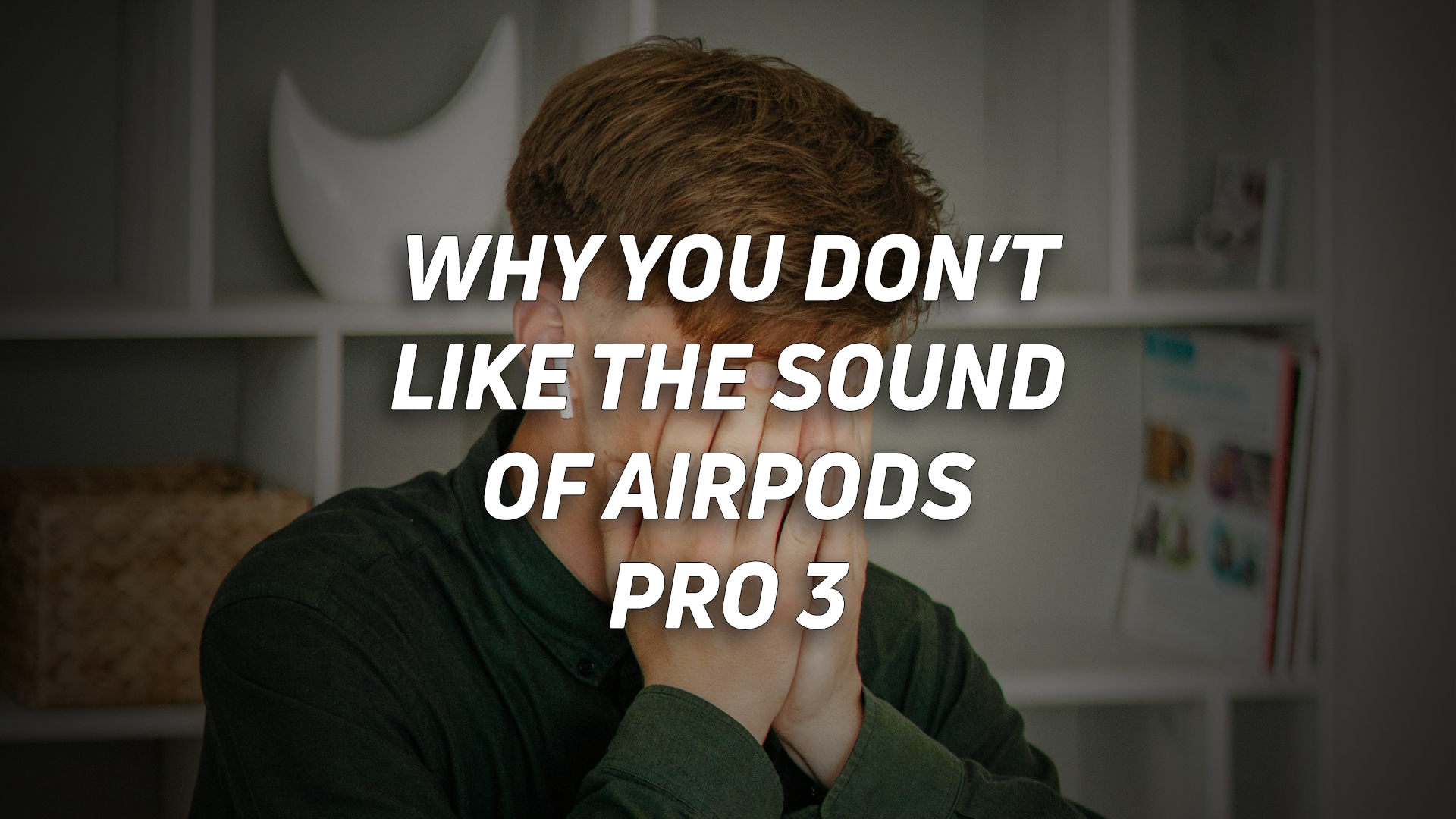All products featured are independently chosen by us. However, SoundGuys may receive a commission on orders placed through its retail links. See our ethics statement.
Why you don't like the sound of the Apple AirPods Pro 3
November 7, 2025
Though Apple has been releasing smash hit after smash hit on the audio side for many years now, the new AirPods Pro 3 have been met by mixed reactions. For some, the sound is too bassy and somehow also shrill, while the earbuds sound perfectly fine to others. So who’s right? The answer is a bit complicated, but still worth teasing out.
Mental models and audio
In journalism, web design, and data visualization, we talk about mental models a lot — and this is probably the first time I’m going to talk about the concept in audio. Mental models are what people believe something “should” be, or a set of beliefs they have about how anything should function. In some ways, these are helpful, as learned patterns help people intuitively understand how to do things like navigate a website, buy something online, or use touch controls on their headphones. But when something doesn’t fit these models, it can result in confusion, frustration at being unable to use something you could before, or a feeling of being helplessly lost.
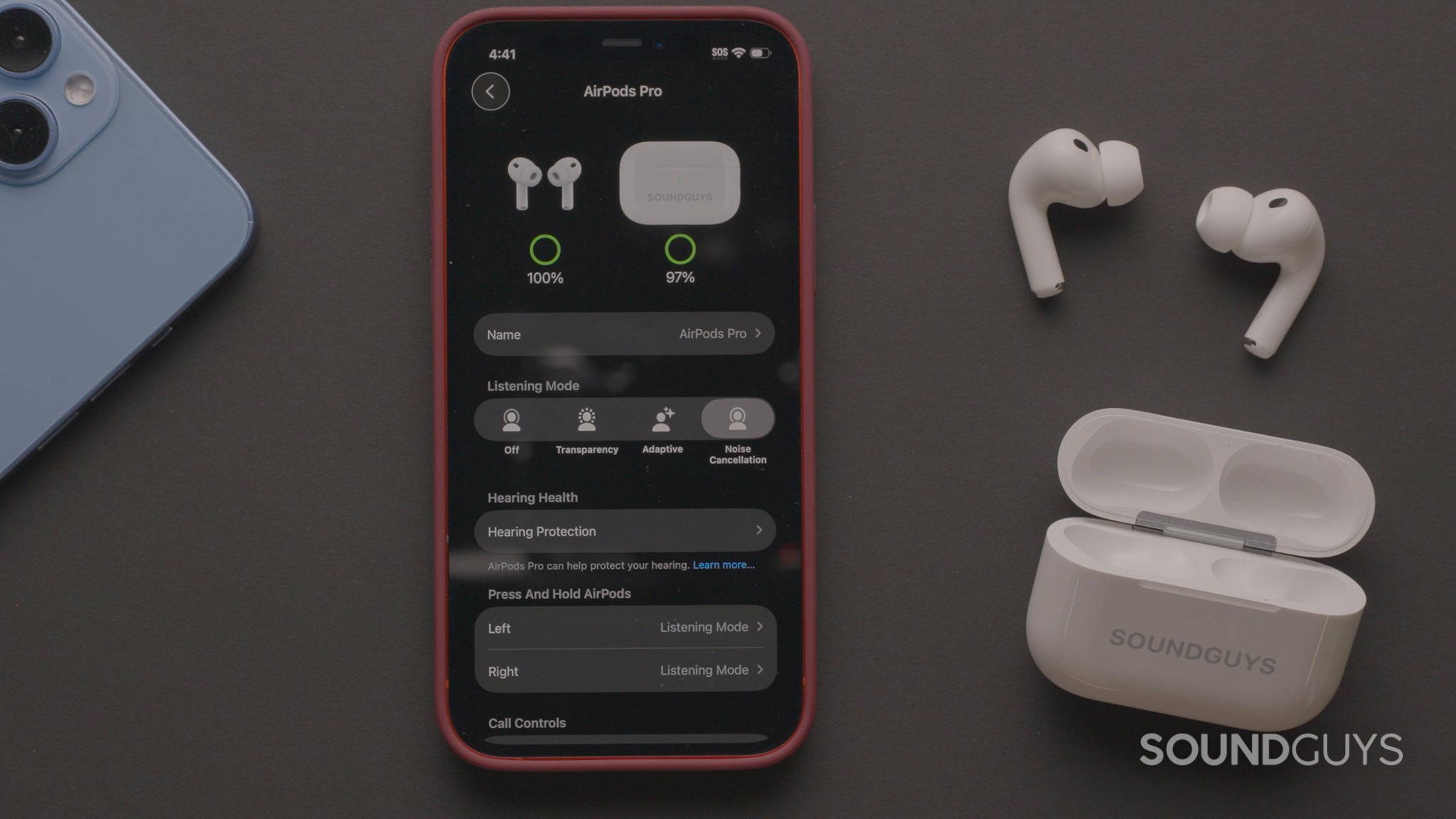
Whether you can come up with an example on your own right away, you’ve definitely had this experience before. When your phone updates and moves things around on you, or when you learn something you’ve known for years is actually wrong, or even the first day of going to a new school or class. To varying degrees, you are very familiar with the experience of having your mental models challenged in this manner.
For audio, research around what people actually like has dragged the industry closer to standards that appeal to more listeners; many audio products bear hallmark characteristics of what these studies identified people like to listen to. For example, an emphasized bass shelf, a regular bump in emphasis above 2kHz (sometimes referred to as the “ear gain bump”), or a rolloff after 10kHz. Since 2014, mass-market manufacturers have moved away from really wild house tunings and brought their products more in line with this research, as products that met it would do quite well. It makes sense: from a business perspective, if you want your product to be well-liked, you’ll appeal to more customers by offering them something they’re used to liking. Because of this, the days of really popular crappy bass cannons are over, and have been for over a decade now.
As a consequence, the less-expensive audio products out there now are much better-sounding than they were years ago. Even something as maligned by audiophiles as AirPods offer a pretty reasonable experience that’s been inoffensive to so many people that it hasn’t been a hindrance on the AirPods Pro 2’s climb to “most popular earbuds ever.” But it’s precisely because of that expected experience that the successor to the AirPods Pro 2 are going to be divisive: these earbuds won’t offer what many are used to hearing — and liking — and that will give many a negative impression of the sound.
Too many good things can be bad

The culprit here is a few good ideas colliding to create an unfortunate outcome:
- Apple added a dip at 120Hz to make the bass sound louder than it actually is, avoiding the ill effects of boosting lows too loudly while still reaping some of the benefits.
- Apple’s Loudness-dependent EQ (LDEQ) feature adjusts the sound based on your hardware’s output settings. This feature attempts to adjust the sound of the AirPods Pro 3 in a way that will make each volume setting seem tuned in the same way perceptually.
- The AirPods Pro 3 have a higher relative emphasis in the treble to make certain sounds easier to hear.
On their own, these ideas make sense. Sure, it’s not what I would do, but Apple isn’t me, and they shouldn’t care what I think. I’m just a dude. However, all of these features can affect what reaches your eardrum, contradicting your mental models of what the earbuds “should” sound like if you’re coming from the AirPods Pro 2.
Though AirPods Pro 2 had the LDEQ feature alongside a somewhat similar sound, the issue is that the features added to the response will alter how someone perceives it. And in the case of the AirPods Pro 3, many users’ first impressions of the earbuds were “too bassy, too bright.” I’m not surprised. Let’s take a look at the responses we’re working with here:
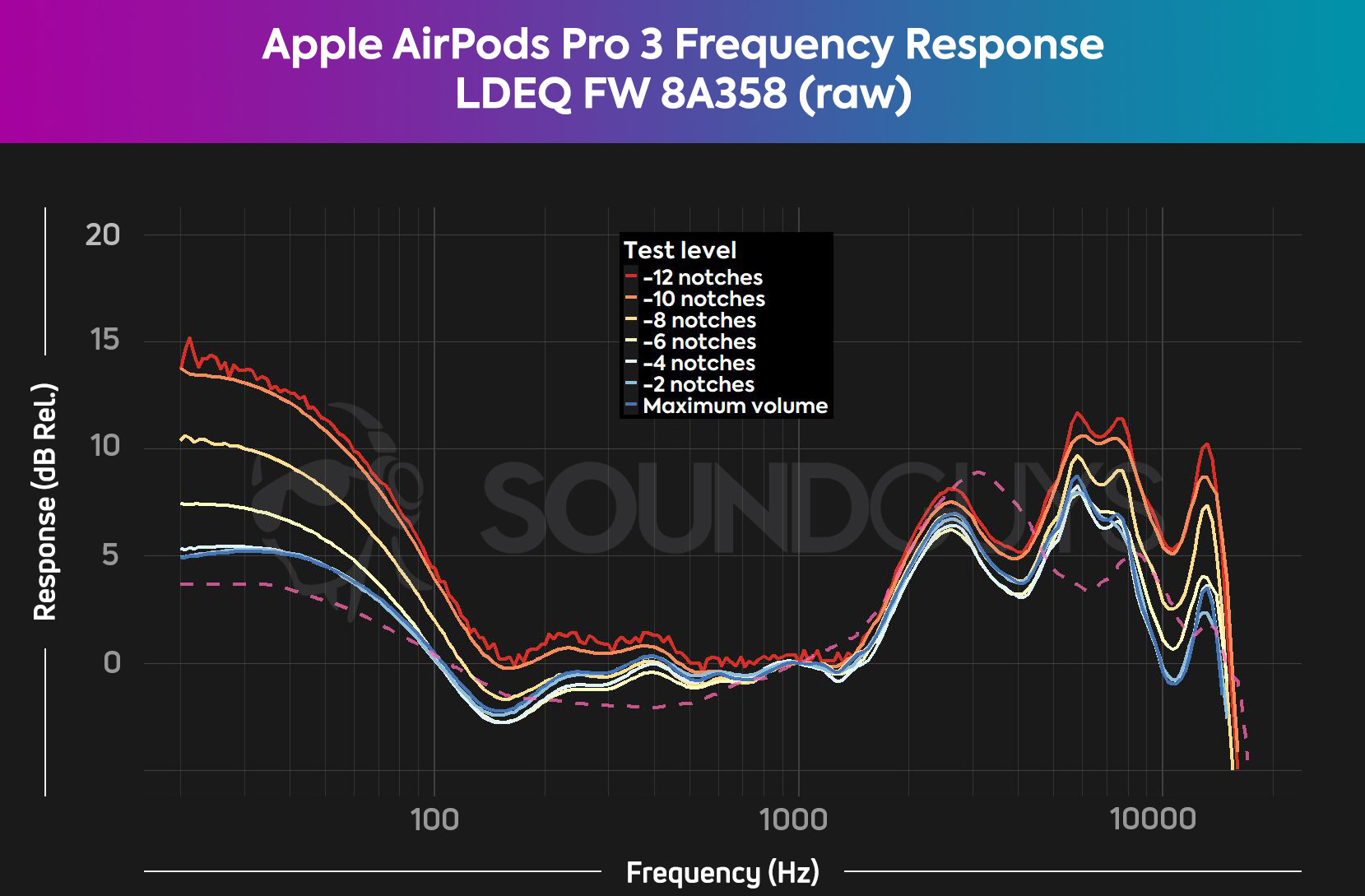
When you normalize all the responses at 1kHz, you can see that bass (sub-256Hz) and treble (above 2kHz) are boosted to an absurd degree as you get quieter. It makes total sense if you’re adjusting levels in the way that humans hear loudness, but perhaps it’s not executed perfectly. Apple did end up making these changes less extreme in the highs, but these measurements came after this update. It was more extreme before.
If you’re listening to the AirPods Pro 3 for the first time right after swapping from the AirPods Pro 2, you likely will be greeted with a sound that’s a bit different from what you’re used to. In a YouTube poll, many of our viewers indicated that they listen at about 50% volume or near, so that seems like a good anchor to investigate.
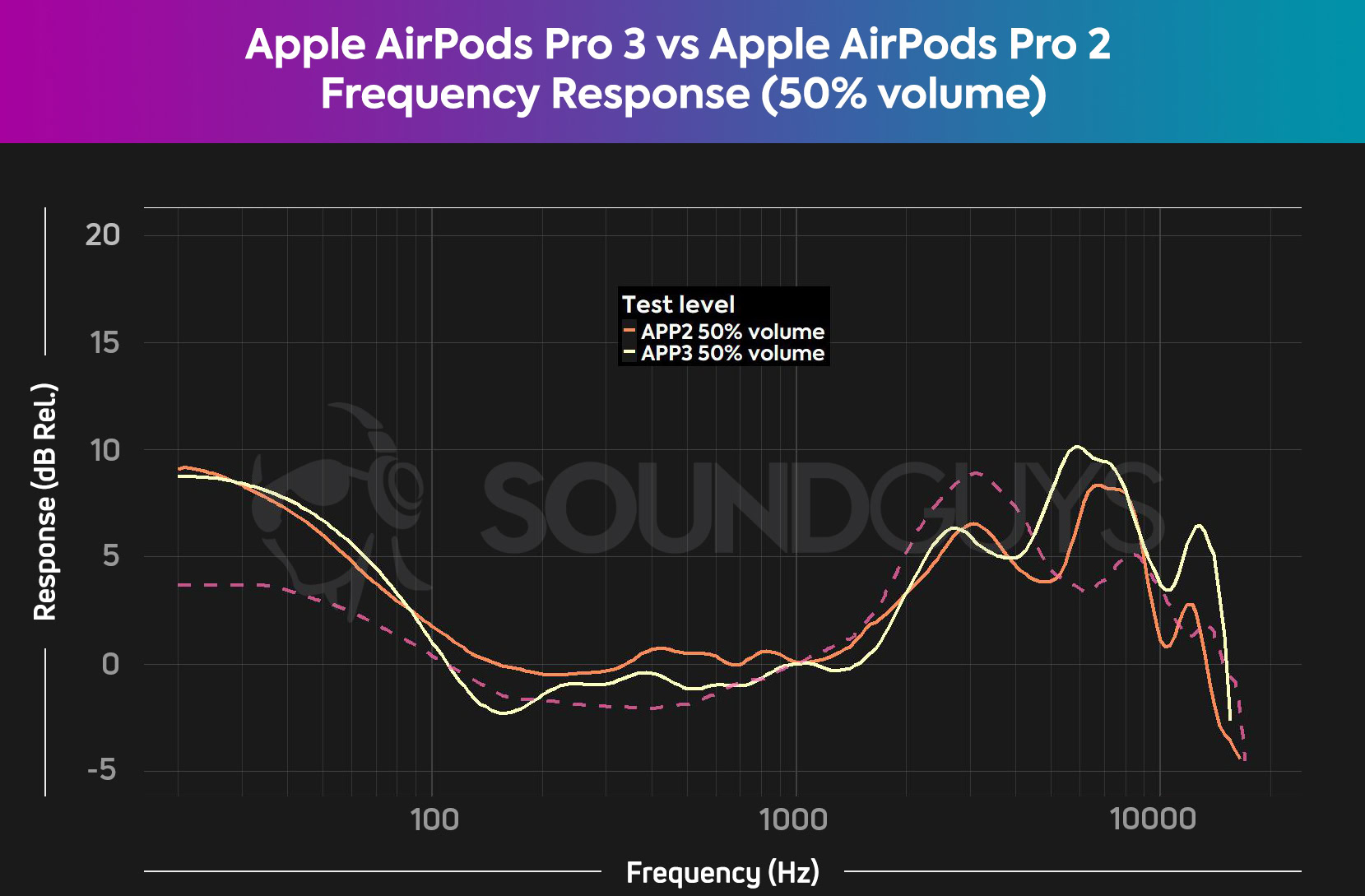
Above, we can see some notable ranges where the response of the AirPods Pro 2 and AirPods Pro 3 diverges significantly, and that’s the highs and the 120Hz dip. That dip will give you the impression that the bass is much louder than it actually is, and the extra energy in the highs… well… they’re going to sound a little shrill by comparison. At the same volume settings, each product will sound different than each other, even if the LDEQ feature will make the same products sound perceptually the same at every volume. The sound isn’t the same from product to product, and it’s different in a way that can annoy some. Viewed in another way:
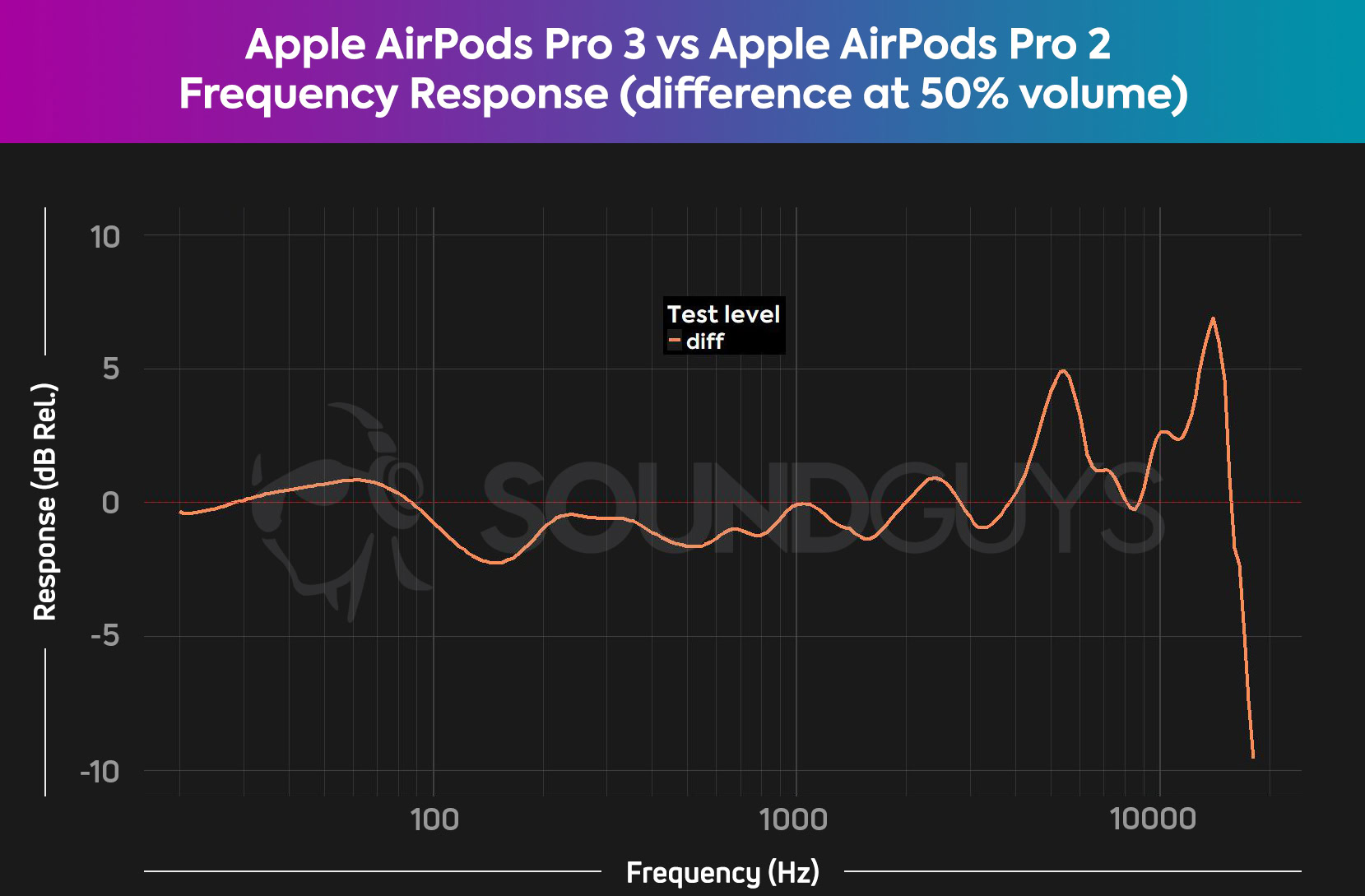
And this is the main drawback of the Apple AirPods Pro 3: if you listen to your music at a fairly quiet level, the output from the earbuds will be very different from your mental model of what your “expected sound” is. Not everyone likes excessive bass, and I don’t know many people without hearing loss who enjoy extreme emphasis in the highs. It’s uncomfortable, even when it’s not incredibly loud. But it’s even more noticeable when you’re coming from the AirPods Pro 2 and expecting the new earbuds to sound exactly the same.
Firmware updates make some issues easy to fix
When we talk about true wireless earbuds, it’s incredible how far they’ve come in just ten short years. Right alongside smartphones, they get more and more complicated every year, being asked to replace more product categories in the pursuit of replacing anything that you could listen to audio with. The engineering challenges to make true wireless earbuds — good ones, anyway — are nuts. But as it is with many complex tools, sometimes little things can cause issues, and it seems like that’s what happened here. Luckily, these things should be pretty easy to smooth over a bit with a firmware update, or even fix altogether.

Apple doesn’t need to throw the baby out with the bathwater, to reach for a ghoulish idiom. Instead, it could make some notable headway by focusing on the user, much like the company did with its hearing accommodation features, and OTC hearing aid function. Allowing users to identify the type of sound they prefer first and then adjusting the loudness-based compensation to their listening habits as an anchor would go a long way toward improving the sound for most users. Additionally, adding an equalizer would assist users trying to dial in their preferred sound. These are fixes well within the grasp of the world’s most successful earphone manufacturer and tech conglomerate. We’ve seen it make the AirPods Pro 2 explode with new features via firmware updates as time goes on, so I refuse to believe that these issues should stick around for long.
What you should do
Though I wish I could tell you that there’s a fix or easy way to train yourself to like something you don’t, there just isn’t. If you can’t get used to the sound at the volume you like to listen at, there’s only so much the AirPods Pro 3 can grow on you — especially when you consider that there’s no way for you to tinker with creating your own tuning.
In the interim, I’d say you have the following options:
- Return the AirPods Pro 3 and get something else.
- Allow yourself time to adjust to the new sound.
- Use your music player’s in-app equalizer to make broad changes to the bass and higher octaves if you find them objectionable.
Beyond that, there’s not a whole lot else to be done. That said, sometimes getting used to the earbuds might be all you need, and this winds up being a non-issue. Maybe it isn’t. Either way, nobody’s crazy for having a negative first impression — but still, I hope everything works out for the best for anyone reading this.
Thank you for being part of our community. Read our Comment Policy before posting.
